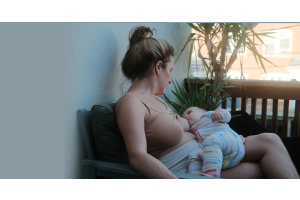Breast Reconstructions
Breast reconstruction is a surgical procedure aimed at restoring breasts after a mastectomy. There are various approaches to breast reconstruction, including some that involve the use of implants and others that utilize tissue from your own body, like from the abdomen, to create a new breast. This reconstruction surgery can be performed either immediately following a mastectomy or at a later time. It's important to note that achieving the desired outcome often requires multiple surgeries conducted over several months.
Outline
What is Breast Reconstruction?
Breast reconstruction refers to the surgical process of rebuilding breasts following mastectomy or lumpectomy. In some cases, this reconstruction involves multiple surgical procedures. There exists a variety of techniques for breast reconstruction, including those utilizing silicone or saline breast implants and others using tissue flaps from different parts of your body, such as the lower belly.
The timing of breast reconstruction can vary; it can be performed immediately after breast cancer surgery (immediate reconstruction) or deferred to months or even years later (delayed reconstruction). Reconstruction surgeries may involve restoring both breasts or addressing a single breast to match the other. Your healthcare provider might recommend a series of surgeries conducted in stages. The choice to undergo breast reconstruction is deeply personal, and not everyone opts for it after a mastectomy.
Two Primary Types of Breast Reconstruction Surgery
1. Flap Reconstruction:
-
Flap reconstruction involves using tissue from your own body (autologous tissue) to create a new breast.
-
Typically, tissue is taken from the lower abdomen (belly), but it can also be sourced from the thigh, back, or buttocks.
-
Your surgeon may remove fat, skin, blood vessels, and muscle from these areas to form the new breast, known as a "flap."
-
There are two methods of flap reconstruction:
-
Pedicled Flap: The flap is moved through your body while retaining its own blood supply.
-
Free Flap: The flap is detached from its blood supply and reattached to blood vessels in your chest.
-
- Types of reconstruction include:
- DIEP flap: Skin, fat, and blood vessels are taken from the lower belly without removing underlying abdominal muscles.
- TRAM flap: Skin, fat, blood vessels, and muscle are removed from the lower belly.
- Latissimus dorsi (LD) flap: Tissue and muscle are removed from the back, and the LD flap, connected to its own blood supply, is transplanted to the breast area.
- IGAP flap and SGAP flap: Tissue is sourced from the buttocks without using muscle, using different groups of blood vessels.
- PAP flap: Tissue is taken from the inner and back of the thigh to form a breast without transplanting thigh muscle.
- TUG flap: Similar to the PAP flap but includes transplanting thigh muscle as well.
- SIEA flap (or SIEP flap): Resembles the DIEP flap but uses different blood vessels and is less commonly performed.
2. Implant Reconstruction:
- In implant reconstruction, saline or silicone implants are used to recreate breast tissue.
- Surgeons may also combine implants with tissue from your body.
- Implant reconstruction can be performed simultaneously with a mastectomy or at a later time.
- There are different approaches to implant reconstruction:
- Under the Chest Muscle: The implant is placed beneath the chest muscle.
- Above the Chest Muscle: The implant is positioned on top of the chest muscle, resulting in a potentially shorter recovery time as the chest muscle remains intact.
- Implant with Tissue Expander: An expander is inserted under the skin, and it is gradually filled with saline, stretching the skin over time. Once the skin has expanded sufficiently, the implant is placed.
Can a nipple be reconstructed?
Yes, it is possible to reconstruct a nipple. In certain mastectomy procedures, such as nipple-sparing mastectomy, the nipple and areola are preserved. However, if they need to be reconstructed or if someone wishes to have a new nipple created, healthcare providers can perform nipple reconstruction.
Nipple reconstruction typically involves the following methods:
- Skin Graft: Skin is taken from another part of your body and used to shape a new nipple.
- Local Skin: Skin from the breast itself or nearby areas can be used to create a new nipple.
Procedure of Breast Reconstructions
Preparation for Breast Reconstruction Surgery.
Breast reconstruction typically follows a mastectomy or lumpectomy. In cases of breast cancer, chemotherapy or radiation therapy may be required before undergoing breast reconstruction surgery. Your surgeon will engage in a discussion with you about your objectives and present the available surgical options.
Your journey begins with a thorough examination by your surgeon, during which breast measurements and photographs may be taken. It's important to provide your healthcare provider with a comprehensive medical history, including details about your health, medications, and any prior surgeries. Your provider might request that you discontinue certain medications before the procedure.
Breast Reconstruction Surgery Process:
Breast reconstruction surgery is performed by a surgeon in a hospital setting. You will be administered anesthesia, ensuring that you are asleep and pain-free throughout the procedure. If you are undergoing a mastectomy or lumpectomy, these procedures will be performed first.
While you are under anesthesia, the breast reconstruction takes place. In the case of implant reconstruction, the surgeon inserts the implant into your chest. If you opt for a flap procedure, tissue is harvested from a specific part of your body and utilized to create and position the new breast.
During the surgical procedure, your healthcare provider might introduce a drain (a slender tube) beneath your skin, with one end protruding from your chest. This tube serves to remove excess fluid and blood during your recovery. Once you no longer require them, your provider will remove the drains.
Recovery After Breast Reconstruction Surgery:
Following surgery, a hospital stay of up to one week may be necessary. A team of healthcare professionals will closely monitor your progress and healing during this time. You may be advised to wear a surgical bra, which provides support to your breasts and reduces swelling as they heal. Before leaving the hospital, your provider will furnish you with detailed instructions for self-care.
Your healthcare provider will assist you in managing post-surgery pain, possibly recommending prescription or over-the-counter pain relief medication. Adhering to your provider's guidance on medication administration is crucial.
If you underwent reconstruction for one breast, additional surgeries may be needed to achieve symmetry between your breasts. These procedures could involve breast reduction or breast augmentation.
Risk and Benefits
What are the advantages of breast reconstruction surgery?
Breast reconstruction surgery can enhance self-esteem following a mastectomy or lumpectomy. Post-reconstruction, individuals often experience an improvement in how their clothing fits and may feel more at ease donning swimsuits.
However, not everyone opts for breast reconstruction after a mastectomy. Some individuals prefer alternatives like wearing a breast form (prosthesis) within a specialized bra. Others may choose to embrace a "flat" appearance and forego prosthetic breasts. The decision regarding these choices is highly individual and varies from person to person.
What are the risks or complications of breast reconstruction surgery?
After the surgery, it's common to experience minimal or no sensation in the newly reconstructed breasts. While some skin sensation may gradually return over time, it won't be the same as it was before.
Potential complications associated with breast reconstruction surgery encompass:
1. Blood Clots: There might be a higher risk of blood clots following certain types of flap reconstruction surgeries.
2. Asymmetry: Breasts could differ in size or shape, with one feeling firmer than the other. Nipples and areolas may not align symmetrically.
3. Bruising and Scarring: Scarring is a typical outcome of all breast reconstruction surgeries, and any initial bruising or scarring may lessen with time.
4. Fat Necrosis: This refers to the death of transplanted tissue, often seen after flap surgery.
5. Implant Issues (for implant reconstruction): Problems such as wrinkling, rippling, and implant ruptures are potential concerns with implant reconstruction.
6. Weakness, Pain, or Sensitivity at Donor Sites: Flap reconstruction procedures can lead to discomfort, weakness, or heightened sensitivity at donor sites like the lower belly, thigh, back, or buttocks












Validate your login
Sign In
Create New Account